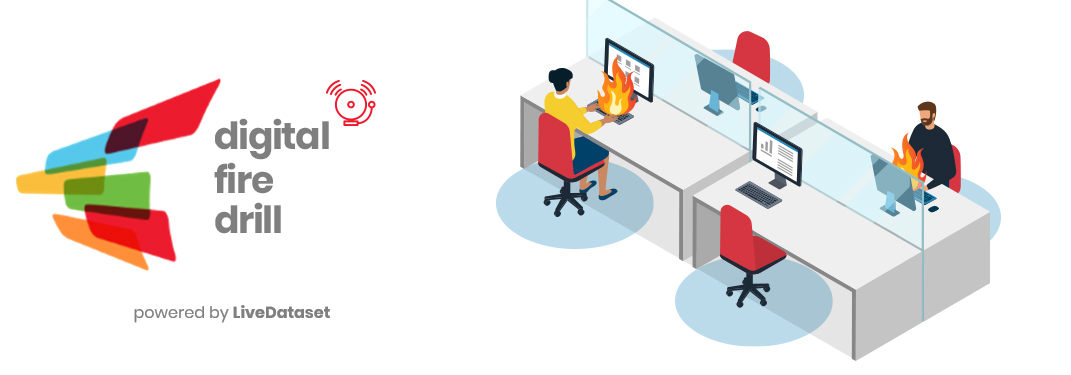LiveDataset Digital Fire Drills
Prevention is better than the cure

A modern, agile approach to solving data and operational challenges
At LiveDataset, we fight the “little fires everywhere” that fuel operational risk: legacy systems, processes that do not scale or rely on spreadsheets
Our platform’s powerful and configurable data collaboration features deliver maximum value to contexts such as Governance, Compliance, Finance, where many people from many locations need to contribute data to a central process.
Our Digital Fire Drills are free, confidential sessions where, having listened to your hot issues we aim to demonstrate how we can neutralise them with a tailored solution, delivered as a service.
A successful Digital Fire Drill will end with a compelling prototype delivered shortly after the session.
Why Digital Fire Drills?
Over the past 20 years we have taken a hands-on and agile approach to solving our clients’ challenges. Risk-conscious clients come to us knowing that an existing process is not adequately tooled, or a new process needs a “proper system” to thrive and scale in a controlled way. Their concerns will typically include:
- I have a problem (e.g. I know the way we are working isn’t optimal, I need these new workflows to be operational ASAP)
- I am living with the problem rather than resolving it (i.e. we have manual processes and spreadsheets to manage the flow of data)
- The cure seems at worst unattainable or at best too big a decision (i.e. the strategic solution will take many months/years/dollars to implement)
A tailored Prototype – faster than you ever thought possible
In these situations we have found it to be incredibly powerful to quickly show the data and workflows within the platform – a demonstrable version of the final end-to-end solution.
Thanks to LiveDataset’s rich set of configurable components, this significant step on the journey is much simpler than most clients realise.
This is why we are able to offer this free of charge and with no formal commitment (other than a couple of short meetings and some key data points).
Client Inputs
1: The diagnosis meeting
Typically a 1-2 hour session where client shares details of the processes that are currently under strain or risky. For example:
- Core systems that don’t quite meet the needs of the business and result in the crude bolt-ons and the all-too-common misuse of “spreadsheets as systems”
- Lack of control or traceability over the flow and manipulation of data in the organisation
- Volume, frequency or sensitivity of data that has evolved to a point where existing processes and tools have become a business risk
2: Sharing of data and workflows
During the diagnosis meeting we will typically uncover the spreadsheets or legacy systems or new processes and workflows that are in need of attention. Once we have these details we have what we need to develop a ‘version 1’ prototype.
LiveDataset Team Outputs
3: Solution creation
Taking the sample data, business rules and outline workflows, the LiveDataset team rapidly configure a standalone, functioning prototype. While custom automation and integration with the live data sources isn’t included at this first phase, typically 80%+ of the end-to-end process can be demonstrated at this stage.
4: Review, engage and roadmap
Clients of our fire drills are able to quickly demonstrate a solution to key business stakeholders. Armed with a working prototype, configured specifically for their requirements, and with a clear integration roadmap that can be achieved in a matter of weeks, clients can move forwards with confidence.
Examples
- The global investment bank compliance team that needed to reconcile disparate feeds in multiple formats from 200+ business lines
- The distributed KYC/AML department with a spreadsheet-based QA process that was straining under the weight of 2,000+ cases per day
- The global insurance firm struggling to understand the root causes of outstanding debtors in branches across 60+ countries
Articles
- Five “No” options to fast-track IT Build projects
- Is “out of the box” what I need?
- The magic of invisible boundaries
- Compliance Audits: Kibosh or Kaizen?
- Big from small
- Computer says YES!
- From idea to go-live in one day?
- Headcount vs Position Management: a conundrum
- Beyond ETL: from many disparate feeds to one smart format
- Visualisation: more is more, and more
- Bold, fearless, ambitious: attitudes to make it happen
Take action now.
